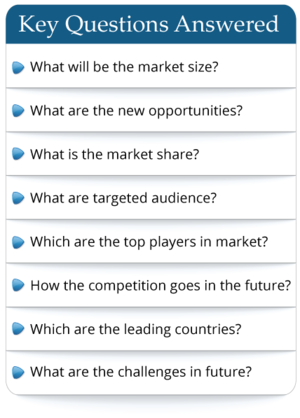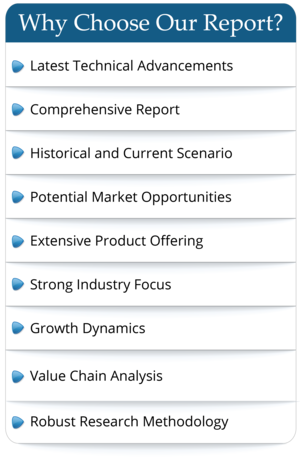Global Quantum Computing Market Research Report 2023-Competitive Analysis, Status and Outlook by Type, Downstream Industry, and Geography, Forecast to 2029
SKU ID : Maia-22903697 | Publishing Date : 10-Mar-2023 | No. of pages : 116
Market Overview
of Global Quantum Computing market:The latest research study on the global Quantum Computing market finds that the global Quantum Computing market reached a value of USD 785.27 million in 2022. It’s expected that the market will achieve USD 6682.38 million by 2028, exhibiting a CAGR of 42.88% during the forecast period.
Quantum computing is an area of computing focused on developing computer technology based on the principles of quantum theory (which explains the behavior of energy and material on the atomic and subatomic levels). Computers used today can only encode information in bits that take the value of 1 or 0-restricting their ability. Quantum computing, on the other hand, uses quantum bits or qubits. It harnesses the unique ability of subatomic particles that allows them to exist in more than one state (i.e., a 1 and a 0 at the same time).
Drivers
Fully scaled quantum technology is still a way off, but as quantum computing matures and becomes more readily available, we will see a rapid increase in the number of companies applying it to various industries. Some of the impacts is already being felt in different sectors. Many financial industry players rely on computing power to improve decision-making and better serve customers. Quantum computing is likely to drive these activities in the next few years. From a business line perspective, the most promising use cases are likely to be those that require highly complex and/or particularly fast models. For example, in valuation, the ability to quickly determine the best risk-adjusted portfolio may create a significant competitive advantage. For loan and bond portfolios, more accurate estimates of credit risk should lead to better optimization decisions. More broadly, capital allocation across a range of corporate finance activities could be improved through insight into the scale and importance of risk, while payments and transfers could be protected through better encryption.
The impact of the COVID-19 pandemic shows that accurate and timely risk assessment remains a challenge for financial institutions. Even before 2020, the financial and economic crisis of the last 20 years has led to rapid changes in the way banks and other market participants assess and price risk across different asset classes. This has driven the introduction of increasingly sophisticated and real-time risk models infused by artificial intelligence (AI), but still based on classical computing.
The arrival of quantum computing has the potential to be a game-changer. However, there is still some way to go before the technology can be rolled out on a large scale. Financial institutions have already started to acquire the necessary hardware and develop the quantum algorithms they need. The financial industry, including banks, could use quantum computing to increase the speed of transactions exponentially, enabling institutions to scale up processing at a lower cost than employing more IT or human resources.
Region Overview:
North America had the highest growth rate of all regions.
Company Overview:
Google is one of the major players operating in the Quantum Computing market, holding a share of 19.48% in 2021.
Google is an American multinational technology company that specializes in Internet-related services and products, which include online advertising technologies, a search engine, cloud computing, software, and hardware. Its Google Services products and platforms include Android, Chrome, Gmail, Google Drive, Google Maps, Google Photos, Google Play, Search, and YouTube. Its Google Cloud provides enterprise-ready cloud services, including Google Cloud Platform and Google Workspace. Its Google Cloud Platform enables developers to build, test, and deploy applications on its infrastructure. Its Google Workspace collaboration tools include applications like Gmail, Docs, Drive, Calendar, Meet. The Google segment is engaged in advertising, sales of digital content, applications and cloud offerings. Its hardware products include Pixel phones, Chromecast with Google TV and the Google Nest Hub smart display. The Other Bets segment is engaged in the sales of Internet and television services, licensing and research and development (R&D) services.
IBM Corporation is a technology company. The Company operates through five segments: Cloud & Cognitive Software, Global Business Services, Global Technology Services, Systems and Global Financing. The Cloud & Cognitive Software Solutions segment delivers integrated and secure cloud, data and artificial intelligence (AI) solutions to its clients. It comprises three business areas: cognitive applications, cloud & data platforms, and transaction processing platforms. Global Business Services segment provides consulting, business process and application management services. Its Global Technology Services segment provides information technology (IT) infrastructure and platform services. The Systems segment provides infrastructure platforms to help meet the requirements of multi-cloud and enterprise AI workloads. Its Global Financing segment is engaged in financing, which is primarily conducted through IBM Credit LLC, and remanufacturing and remarketing.
Segmentation Overview:
Among different product types, Services segment is anticipated to contribute the largest market share in 2027.
Application Overview:
By application, the Machine Learning segment occupied the biggest share from 2017 to 2022.
The report covers a research time span from 2018 to 2029; combines extensive quantitative analysis and exhaustive qualitative analysis; presents not only an overview of the global Quantum Computing market in metrics of sales, revenue, growth rate, but also a deeper dive into the segmented market by region, product type and downstream industry, showing the readers a clear and distinct picture of how the market is distributed from different perspectives.
For competitive landscape, prominent players with considerable market shares are comprehensively analyzed in this report. With information regarding the concentration ratio and detailed data reflecting the market performance of each player shared, the readers can acquire a holistic view of the competitive situation and a better understanding of their competitors.
As the COVID-19 takes over the world, we are continuously tracking the changes in the markets. We analyzed the impact of the pandemic in detail, along with other key factors, such as macro-economy, regional conflicts, industry related news and policies. Meanwhile, market investment scenario, technology status and developments, supply chain challenges, among other essential research elements are all covered.
Research Scope
This report provides an overview of the global Quantum Computing market and analyzes the segmented market by product type, downstream industry, and region, presenting data points such as sales, revenue, growth rate, explaining the current status and future trends of the Quantum Computing and its sub-markets in an intuitive way.
Key Companies in the global Quantum Computing market covered in Chapter 3:
Intel Corporation
Rigetti Computing
QC Ware Corp
D-Wave Systems Inc.
Atos SE
QRA Corp
IBM Corporation
Cambridge Quantum Computing Ltd.
In Chapter 4 and Chapter 14.2, on the basis of types, the Quantum Computing market from 2018 to 2029 is primarily split into:
Hardware
Software
Services
In Chapter 5 and Chapter 14.3, on the basis of Downstream Industry, the Quantum Computing market from 2018 to 2029 covers:
Optimization
Machine Learning
Simulation
Others
Geographically, the detailed analysis of consumption, revenue, market share and growth rate, historic and forecast (2018-2029) of the following regions are covered in Chapter 8 to Chapter 14:
North America (United States, Canada)
Europe (Germany, UK, France, Italy, Spain, Russia, Netherlands, Turkey, Switzerland, Sweden)
Asia Pacific (China, Japan, South Korea, Australia, India, Indonesia, Philippines, Malaysia)
Latin America (Brazil, Mexico, Argentina)
Middle East & Africa (Saudi Arabia, UAE, Egypt, South Africa)
Key Factors Considered
COVID-19
Amid the COVID-19 crisis, the Quantum Computing market has definitely taken a hit. The report describes the market scenario during and post the pandemic in the vision of upstream raw materials, major market participants, downstream major customers, etc. Other aspects, such as changes in consumer behavior, demand, transport capacity, trade flow under COVID-19, have also been taken into consideration during the process of the research.
Regional Conflict / Russia-Ukraine War
The report also presents the impact of regional conflict on this market in an effort to aid the readers to understand how the market has been adversely influenced and how it’s going to evolve in the years to come.
Challenges & Opportunities
Factors that may help create opportunities and boost profits for market players, as well as challenges that may restrain or even pose a threat to the development of the players, are revealed in the report, which can shed a light on strategic decisions and implementation.
Chapter Outline
Chapter 1 starts the report with a brief overview of the research scope, as well as the definitions of the target market and the subdivisions.
Chapter 2 integrates and sketches the research findings and conclusions in a clear and explicit way.
Chapter 3 presents the competitive landscape by displaying the sales, revenue, and market shares of the top players. It also profiles the major market participants with their business introductions, sales, price, revenue, gross, growth rates, etc.
Chapter 4 breaks down the market by different product types and shares data correspondingly with the aim of helping the readers know how the market is distributed by type.
Chapter 5 segments the market by downstream industry, with data covers sales, revenue, and growth rate tracing back to 2018.
Chapter 6 is the analysis of the whole market industrial chain, ranging from upstream raw materials to downstream customers, with regional conflicts taken into consideration.
Chapter 7 elaborates on market dynamics. Factors that drive, challenge, or restrain the market are all listed, together with industry news, opportunities, impacts of COVID-19, and SWOT analysis.
Chapter 8 shows the breakdown data at the regional level, which enables the readers to picture the regional competitive pattern of the market and learn about the revenue, sales, and market share of all the major regions.
Chapter 9-13 focus on each and every of the major region, specifically, North America, Europe, Asia Pacific, Latin America, Middle East & Africa. Sales, price, revenue, gross, gross margin, among others, will be all be presented.
Chapter 14 forecasts the future trend of the market not only as a whole but also from the perspective of all segments.
Years considered for this report:
Historical Years:
2018-2022Base Year:
2022Estimated Year:
2023Forecast Period:
2023-2029Frequently Asked Questions
- By product type
- By End User/Applications
- By Technology
- By Region

 Pre-order Enquiry
Pre-order Enquiry Request Free Sample
Request Free Sample


 Request Sample
Request Sample Request Discount
Request Discount










